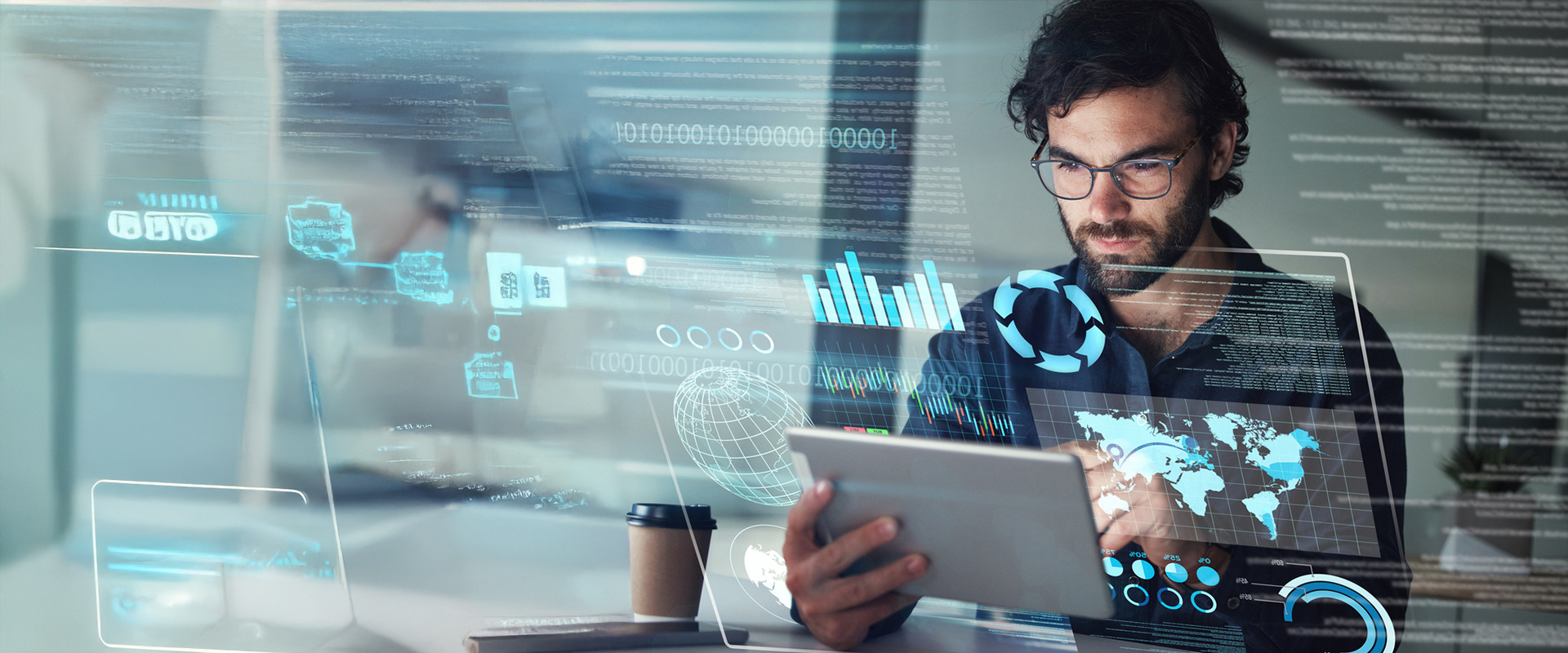Atlas Systems Named a Representative Vendor in 2025 Gartner® Market Guide for TPRM Technology Solutions → Read More
2. Panorays
This automated third-party risk assessment software enables organizations to assess and continuously monitor their vendors’ security posture by combining external attack surface evaluations, automated questionnaires, and business-criticality analysis.
Key features
- Risk DNA assessments: The customized risk scores factor in each vendor’s business impact and your business context
- External attack surface monitoring: Panorays doesn’t just monitor vendors’ external digital footprint; it also monitors fourth and fifth parties for vulnerabilities
Pros
- Automation efficiency: Automated vendor assessments and questionnaires significantly reduce the time and manual effort required for due diligence
- Contextual risk insights: The platform combines business context, vendor criticality, and real-time security data into dynamic risk ratings to help organizations prioritize threats and strengthen overall supply chain resilience
Cons
- Implementation can be complex: New users may require specialized onboarding to fully optimize the features and analytics
- Pricing not public: Since pricing isn’t publicly disclosed, it’s difficult to compare the tool directly with similar solutions
3. UpGuard
Three features make UpGuard stand out from other platforms: its rapid, non-intrusive scanning, a focus on technical data accuracy for security ratings, and a comprehensive TPRM lifecycle approach.
Key features
- Automated security ratings: The platform continuously monitors vendors’ external security posture and assigns a score, helping organizations manage supplier risks effectively
- Multi-framework support: Ensures third parties meet standards like GDPR, NDFS, PCI DSS, and helps automate documentation
Pros
- Comprehensive risk assessments: UpGuard combines external security ratings with internal questionnaires and data leak detection, offering a comprehensive view of vendor risk
- Scalability: UpGuard scales well if you have many vendors thanks to automation, AI, and continuous monitoring
Cons
- Feature shortcomings: Some users have complained that the platform lacks advanced functionality around detailed report handling and asset filtering
- Cost concerns: You need extra licenses to monitor multiple companies
4. Bitsight
Bitsight uses a unique combination of AI and human curation to map a company's digital footprint and understand its cyber risk.
Key features
- Comprehensive TPRM management: Bitsight provides a clear, quantifiable score for each third-party, helping companies to prioritize vendor assessments
- Attack surface management: The platform gives organizations a comprehensive view of their digital footprint, helping them identify and manage unknown assets and potential vulnerabilities
Pros
- Data-driven analytics: Bitsight uses data science to provide organizations with advanced analytics and to financially quantify cyber risk
- Daily security ratings: The platform measures vendor security performance daily based on externally collected data
Cons
- Overreliance on external data: Bitsight's ratings are based on externally observable data, so it may give an incomplete picture of security posture
- Slow remediation updates: Once a vulnerability is fixed, it may take a while before the change is reflected in the security rating, which can be frustrating for companies working to improve their score
5. ProcessUnity
This highly configurable, no-code platform allows enterprises to quickly customize risk management workflows. It offers pre-built components for third-party risk management.
Key features
- Highly configurable: Organizations can customize their workflows, questionnaires, and reports to match their unique processes and requirements
- Global Risk Exchange: The platform has a large, shared database of third-party risk data, which lets companies easily access completed and validated vendor assessments
Pros
- Customizable: Organizations can customize questionnaires, workflows, dashboards, and risk scoring models to fit their specific needs
- Comprehensive features: ProcessUnity's TPRM platform covers the entire third-party risk lifecycle, from due diligence to offboarding
Cons
- Setup can be complex: Smaller businesses or those without dedicated resources for GRC platform management may find the initial configuration challenging
- Clunky user interface: The user interface can be challenging to navigate, especially when making changes that require specific formulas or logic
6. Prevalent
Prevalent, now a part of Mitratech, provides enterprises with comprehensive tools to assess, monitor, and remediate risks throughout the entire vendor lifecycle.
Key features
- Vendor risk networks: Organizations have access to libraries of completed, standardized risk reports for thousands of vendors to accelerate due diligence and enrich assessments
- AI-powered automation: AI automates many aspects of the TPRM process, from auto-scoring assessments to risk remediation guidance
Pros
- Managed services: Enterprises can pay for experts to conduct risk assessments, identify potential risks, and track remediation
- Secure vendor portal: Vendors can complete questionnaires, submit documentation, and collaborate on remediation efforts on the secure online portal
Cons
- Complex feature set: The platform’s advanced features may require onboarding and training
- Reporting limitations: Some users have complained that the reporting features lack the depth and customization needed for highly specific analytical requirements
7. MetricStream
This third-party risk assessment tool strongly focuses on risk quantification, uses advanced AI/ML-powered analytics for anomaly detection, and offers seamless vendor integration capabilities.
Key features
- Integrated GRC Platform: MetricStream offers a more unified approach to managing enterprise-wide risk, compliance, and audit activities
- AI-powered risk identification: Pre-trained AI models review third-party responses to identify, rate, and recommend remediation of risks
Pros
- Fourth-party risk assessment: Extends risk assessment to fourth parties by capturing related entities, aggregating risk exposure, and automating monitoring for a holistic risk view
- Scalability: The platform allows you to add new modules and functionalities as needed
Cons
- Setup can be complex: Leveraging the full capabilities may require significant setup, configuration, and training
- Occasional performance issues: Some users report that the platform can be sluggish when generating complex reports or running large assessments.
8. LogicGate
This platform offers third-party risk management as part of its overarching GRC solution. Its key differentiators include seamless integration of external data sources like Black Kite and user-designed risk scoring models.
Key features
- Automated vendor onboarding and offboarding: The software streamlines vendor processes with pre-built workflows
- No-code platform: Users without technical expertise can customize workflows, forms, reports, and dashboards for rapid deployment
Pros
- Workflow automation: LogicGate automates repetitive risk assessment tasks and notification workflows, boosting efficiency and reducing human error
- Industry-standard questionnaires: The platform offers pre-built templates aligned with NIST, SIG, CAIQ, and more
Cons
- Steep learning curve: The platform can be overwhelming for non-technical end-users who only need to interact with specific workflows
- Reporting limitations: Some power users have complained that achieving highly detailed or customized reports may require additional effort or the use of external tools
9. Vanta
Vanta’s centralized vendor inventory automatically identifies and catalogs vendors, providing holistic visibility into vendor exposure.
Key features
- Risk scoring: Pre-built vendor scoring tools can be customized to organize vendors by inherent risk
- Vendor portal: This collaborative hub allows companies to evaluate vendor risk and vendors to securely respond to due diligence requests
Pros
- Continuous monitoring: The automated risk assessment tool tracks vendor attack surfaces and real-time security issues, issuing alerts with context and mitigation suggestions
- Powerful integrations: Vanta integrates with popular SaaS, cloud, HR, and procurement systems for centralized risk management and workflow automation
Cons
- Reporting limitations: Reporting features are largely pre-set, and users have challenges customizing or exporting deep analytics for internal use or audits
- Expensive: The platform can be costly for small or early-stage organizations
10. CrowdStrike
CrowdStrike employs a cloud-native approach with a unified AI engine, providing comprehensive protection across an organization’s entire digital supply chain.
Key features
- Attack surface management: The platform identifies vulnerabilities in vendors’ digital footprints, reducing blind spots in third-party ecosystems
- Endpoint detection and response: The Falcon platform provides continuous visibility into endpoint activity, intelligently prioritizing malicious activity to ensure security teams respond quickly
Pros
- Risk prioritization: Uses contextual intelligence to ensure organizations focus on the most critical vulnerabilities or vendor risks
- Advanced threat detection: Its high-fidelity threat detection, powered by AI-driven analytics and a large threat intelligence database, helps to stop breaches before they cause serious damage
Cons
- Costly for smaller firms: Its enterprise focus limits adoption among smaller businesses seeking pure TPRM functionality
- Complex setup: Some advanced features and integrations can be complex to set up and require expert knowledge
Secure Your Business in a Vendor-Driven World with ComplyScore® by Atlas Systems
Risk assessment is crucial for any organization seeking to remain compliant with industry regulations and safeguard its systems against malicious actors. An automated risk assessment tool, such as ComplyScore®, provides visibility into vendor risks and helps you mitigate them before they significantly impact your organization.
Stay ahead of cybercriminals by automating vendor risk assessments, monitoring compliance, and streamlining audits. ComplyScore® gives you the visibility and control you need to protect sensitive data, meet regulatory requirements, and foster strong vendor relationships in a rapidly evolving business environment.
Ready to secure your vendor ecosystem? Request a demo of ComplyScore® today.
Frequently Asked Questions
1. What differentiates automated TPRM from traditional risk management?
Automated TPRM leverages AI, natural language processing, data analytics, and automation to identify, evaluate, and quantify cybersecurity risks. Traditional risk management involves manually performing risk assessments using spreadsheets and conducting manual checks.
2. How does ComplyScore® integrate with existing enterprise systems?
ComplyScore® uses API connections to integrate with existing enterprise systems. This ensures seamless, real-time data exchange.
3. Can ComplyScore® handle global third-party vendors and regulations?
ComplyScore® comes pre-aligned with global compliance frameworks, such as GDPR, ISO 27001, and SOC 2, and has been implemented in over 65 countries.
4. What industries are best suited for ComplyScore®?
ComplyScore® is ideal for organizations in highly regulated industries like healthcare, financial services, manufacturing, energy, and government.
5. How frequently should risk assessments be performed?
Risk assessments should be performed whenever there are significant regulatory changes, new vendors, or system updates.
6. What level of support does Atlas Systems provide during implementation?
Atlas Systems provides full implementation support, including onboarding guidance, ongoing training, and continuous assistance.
.png?width=869&height=597&name=image%20(5).png)

.png?width=300&height=175&name=Rectangle%2034624433%20(2).png)





.webp)






.png?width=645&height=667&name=Widgets%20(2).png)















.png)












